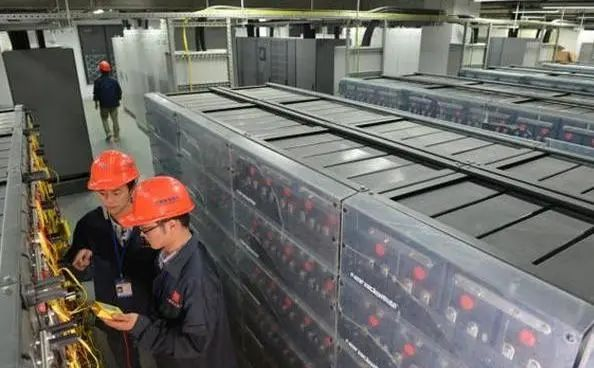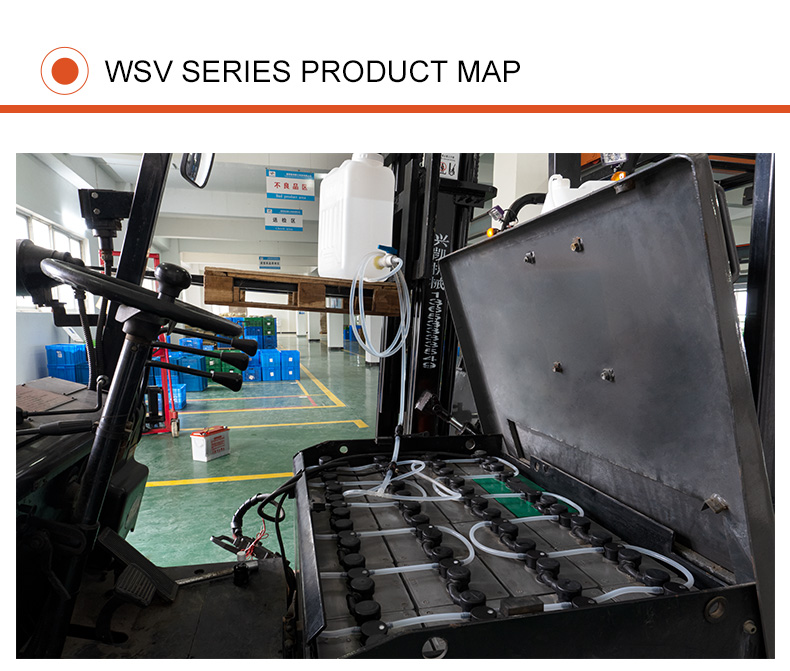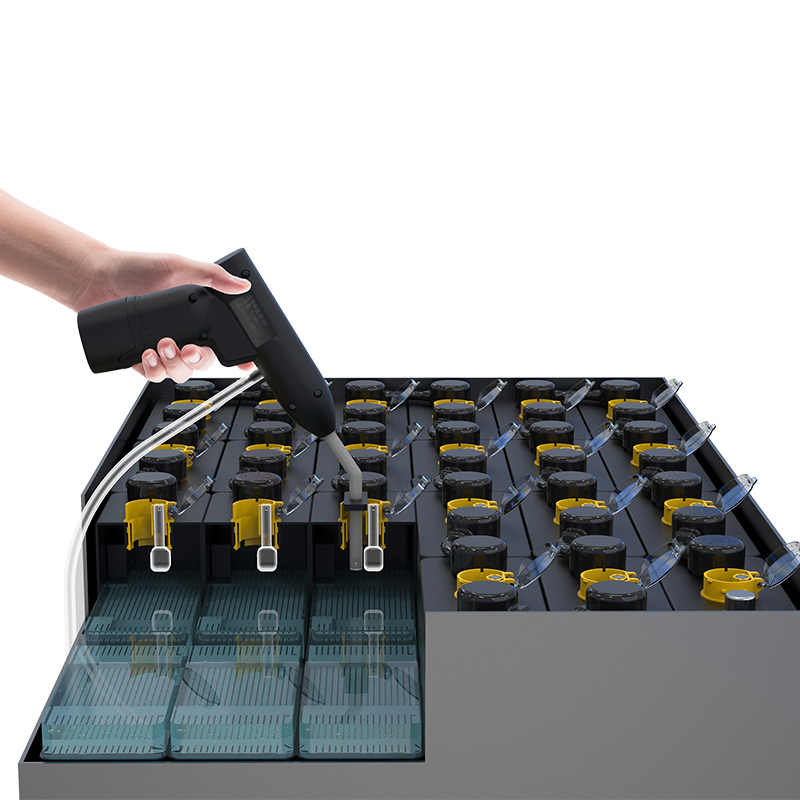欢迎您访问湖北联鸿能源科技有限公司网站,我司主营汽车蓄电池配件、工业蓄电池维护保养产品
全国咨询热线:0710-3313598


 Technology
TechnologyIs very common in our daily life of battery products, such as mobile phones, we charging treasure, storage battery, car products are supplied with battery power, the duration of storage battery directly affect our use of product experience, the storage capacity of the battery is long and short and evaluation of product quality technology to a standard battery, brought everyone to understand the knowledge about the battery under today.
Many people don't know lead-acid battery can add water, in fact completely can be added, danger is afraid of the sulfuric acid spilled inside, put on rubber or plastic gloves, and in charge do not turn electric power, add water to be meaningful, disorderly add water not only useless, harmful instead, and want to add distilled water, don't add other things, the amount not much, The following to teach lead-acid battery water method and the need to pay attention to the problem.
What is a lead-acid battery?
The electrode is mainly made of lead and its oxide. The electrolyte is a kind of battery in sulfuric acid solution. In discharge state, the main component of the positive electrode is lead dioxide, and the main component of the negative electrode is lead. Charging status, the main components are all lead sulfate is negative, into the exhaust type battery and maintenance-free lead-acid battery, the battery is mainly composed of tubular positive plate and negative plate, electrolyte, separator, battery case, battery cover, such as column, filler cap, rooms are lead-acid storage battery commonly used, typically by UPS backup power supply, computer room equipment power supply.
Which batteries need to be replenished?
1.capacity down to 20% of the lead acid battery water shortage is serious, must.
2. Lead-acid batteries with capacity below 40% or more than 20% lack water, so it is recommended to replenish water for repair.
3.the capacity of lead-acid battery decreased to less than 60%, more than 40% of the water shortage is not much, if the conditions of water replenishment battery repair effect will be better.
4.the capacity of less than 60% of the basic water, no need to supplement.
The six single-cell water replenishment amounts of lead-acid batteries should be similar to each other when normal. The specific amount of water replenishment for each lead-acid battery depends on the water loss degree of the lead-acid battery. In short, in the whole repair process should ensure that the lead acid battery in each single cell within the flow of electrolyte

Lead acid battery water method steps:
General lead-acid battery water how much is appropriate? A 12V lead-acid battery has 6 single cells, and the total amount of electrolyte in each single cell is about dozens to hundreds of milliliters according to the capacity of the battery. Usually, only a few milliliters to dozens of milliliters need to be added. It is appropriate to fill the plate group with electrolyte just now. The method and steps of adding water to lead-acid battery are as follows:
Open the lead acid battery refers to open the safety valve on the lead acid battery, you can directly see the interior of the lead acid battery. The position of the safety valve of the lead-acid battery is below the safety valve cover of the lead-acid battery. The safety valve cover is generally glued or welded to the big cover of the lead-acid battery by ultrasonic. Perform the following steps to refill water for lead-acid batteries.
1. Preparation. Use distilled water and pure sulfuric acid to configure the electrolyte, the ratio is :500ml, distilled water, add 0.5ml, pure sulfuric acid. Prepare standard rubber relief valve for use. Tools: screwdriver, straw (disposable needle tube can be used instead), transparent polyethylene tube, diameter brush for straw (needle) suction, ABS glue.
2. Pry open the cover plate above the lead acid battery along the exhaust hole. Some lead acid batteries are covered with ABS adhesive, and some lead acid batteries are connected with buckles. Pay attention to pry open the cover, do not damage the cover. The rubber caps of the six relief valves can be seen.
3.open the rubber cap, expose the vent, through the vent can see the lead acid battery inside. Some lead acid battery safety valve can be unscrewed, some lead acid battery rubber cap around some filler, pay attention to remove the filler.
4. Suction the prepared electrolyte with dropper, and inject the electrolyte from the exhaust hole. The electrolyte should cover the plate exactly 1mm.
5. The exhaust hole of the lead-acid battery filled with the electrolyte is covered with a breathable shield to prevent dust from falling into the exhaust hole. Let stand for 24h, observe whether there is flowing electrolyte (free acid) inside the vent, if not, add electrolyte.
The six single-cell water replenishment amounts of lead-acid batteries should be similar to each other when normal. The specific amount of water replenishment for each lead-acid battery depends on the water loss degree of the lead-acid battery. In short, in the whole repair process should ensure that the lead acid battery in each single cell within the flow of electrolyte.
Cover the exhaust hole with transparent polyethylene sleeve of 2Ocm in length, and charge the nominal I2V lead-acid battery with 16.2V constant voltage and current limiting without covering. When charging, it is best to put the lead-acid battery in an acid-proof container to prevent the overflow of the electrolyte from polluting the environment and corroding the equipment. The lead acid battery is considered to be full of lead acid battery when it is charged for the first time after the red light starts flashing for 3h.

What should I pay attention to when adding electrolyte or water for lead acid batteries
The electrolyte of lead-acid battery is an aqueous solution of sulfuric acid. In lead-acid battery, the electrolyte is the component that participates in the reaction. Therefore, the capacity of the battery is directly dependent on the electrolyte in the battery. Usually dynamic VRLA lead-acid battery water loss refers to the loss of water electrolyte. The main causes of water loss are as follows:
1. Hydrogen or oxygen generated by water electrolysis leaves the battery;
2. In the process of lead (Pb) being converted into lead dioxide (PbO2) due to corrosion of the gate, oxygen is absorbed and oxygen is lost in the aqueous component; Evaporation loses water;
3. Water vapor can also be lost directly through the shell wall of the battery;
4. The water vapor in the battery spills out of the battery with hydrogen and oxygen, etc.
After the battery is replenished, pay attention to the following problems. After the initial charging of the battery is completed, check whether there is any electrolyte on the surface of the lead acid battery electrode group. If there is no electrolyte, replenish the electrolyte before charging. If there is electrolyte in the six cells, use a pipette to drain the excess electrolyte. All lead-acid batteries that need to be replenishment should be pulse vulcanized after replenishment. Before replenishment, lead-acid batteries work in a state of high sulfuric acid concentration, and lead-acid batteries are either light or heavy in different degrees of vulcanization. Note the following when adding electrolyte or water to lead acid batteries:
(1) The electrolyte is higher than the plate L.0--1.5mm. For lead-acid batteries with two red lines, the electrolyte shall not exceed the upper red line. If the electrolyte is too full, it can overflow through the hole in the lead acid battery cover. Because the electrolyte is conductive, once it flows into the lead acid battery between the positive and negative poles, it will form a self-discharge loop. In this case, the electrolyte should be wiped off, or washed with water.
(2) when adding the electrolyte, if there is something accidentally dropped, do not use metal to pick up, the application of wooden bar to clamp out impurities. If iron wire or copper wire to fish, metal molecules in sulfuric acid corrosion into the lead acid battery to form self-discharge, damage the lead acid battery.
(3) In the charging and discharging repair process of lead-acid battery, the water in the electrolyte will gradually decrease because of electrolysis and evaporation, resulting in the decrease of the electrolyte level. If it is not replenished in time, it may shorten the service life of lead-acid batteries. Distilled water should be replenished in time.
Warning: if in case of too much water, it is necessary to suck out excess electrolyte under the state of discharging power so as not to make acid loss too much, otherwise it will cause the battery voltage can not reach the normal standard, and it is difficult to achieve the repair effect of the battery.

This section describes how to refill water for lead-acid batteries
1. Artificial water refill
Artificial filling water is a user needs a battery hydrating, at the end of the charging time, our staff can visual forklift battery electrolyte liquid level height, if lower than the lowest level, this time we need artificial filling water, can use the syringe to battery filling water, a water inlet is too much, no more than the minimum level.
2. Automatic water refill
You can use professional water replenishing tools, such as battery water gun and lead-acid battery water replenishing tools, to make battery water replenishing maintenance convenient, safe, and efficient. It can easily add water with one button, which is safe and convenient. Meanwhile, it can help control the level of liquid level, ensure the balance of battery characteristics and prolong the battery life.